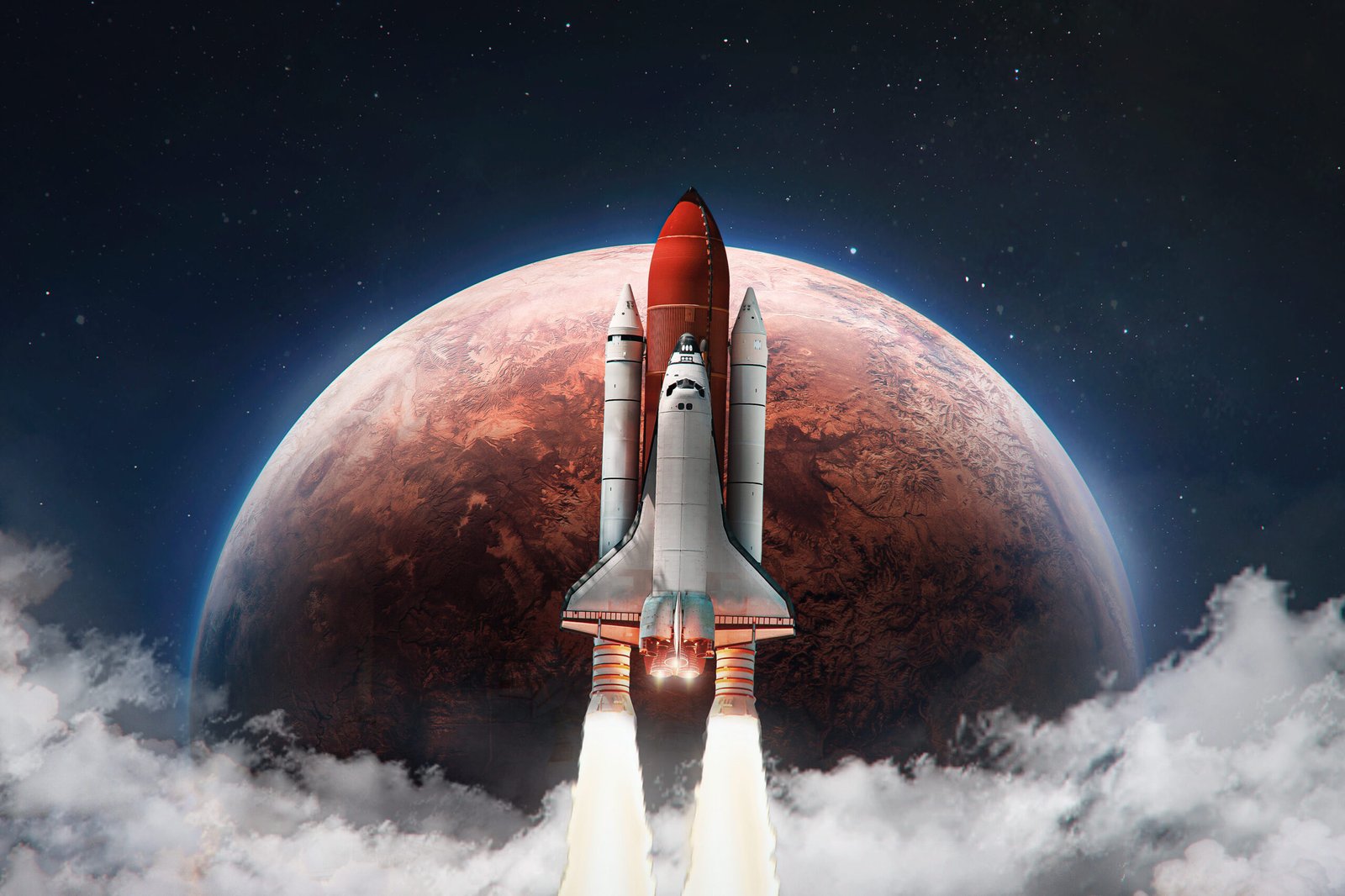The Real Goal Isn’t Just to Visit Mars, It’s to Stay

While most space missions today aim to orbit Earth, visit the Moon, or land a few rovers, Elon Musk is thinking far bigger. His vision for Mars goes well beyond a short trip or symbolic landing. He wants to build a full-fledged colony — one that’s self-sustaining, capable of growing its own food, generating its own power, and eventually surviving without help from Earth.
This is the part of the plan most people don’t see in press releases. It’s not about bragging rights or planting a flag. It’s about making humanity “multi-planetary.” Musk believes that spreading out across the solar system is essential for our long-term survival, especially in case of a catastrophe on Earth. That vision turns a distant red planet into a kind of insurance policy for the human species. If it works, we wouldn’t just live on Earth anymore. Mars would become our backup drive, our second home — and possibly the first step in a galactic migration.
Starship Isn’t Just a Rocket, It’s the Core of the Mars Plan
At the center of Elon Musk’s plan is Starship, SpaceX’s fully reusable super-heavy launch system. It’s big, powerful, and unlike anything the world has seen before. But it’s more than a rocket. It’s the core infrastructure for building a settlement on Mars. Starship is designed to carry more than 100 people and over 100 tons of cargo per trip — which is exactly what it takes to build something meaningful on another planet.
The idea is to launch multiple Starships, loaded with habitats, water extraction systems, solar panels, farming equipment, and life-support tech. Once these ships arrive, they’d start creating the foundation of a Martian city. People would follow. Musk’s long-term vision involves a fleet of thousands of Starships traveling between Earth and Mars on a regular cycle. If that sounds like science fiction, it’s because it used to be. But each new test flight brings that future a little closer — and changes how we think about what’s possible for humanity.
Mars Could Become a Place for New Societies to Emerge
Elon Musk often talks about Mars as a “blank slate,” a place where we can try again. Without existing governments, corporations, or social norms, the Red Planet could become an experimental ground for new ways of living. What laws would we follow? How would we manage resources, power, and relationships in a closed system millions of miles from Earth?
This concept has sparked excitement and concern. On the one hand, Mars offers a chance to design a better world from scratch. On the other, it forces us to confront what went wrong on Earth — and whether we’d carry those problems with us. Musk hasn’t outlined every detail of governance, but the idea of a new civilization developing from the ground up is baked into the plan. It’s not just a space mission. It’s a social experiment on a planetary scale, and it may redefine what it means to be human in the process.
Terraforming Is Part of the Long Game
Mars is cold, dry, and bathed in radiation — not exactly friendly to human life. But Musk’s plan doesn’t stop at building domes and bunkers. Long-term, he wants to terraform the planet. That means changing its atmosphere and climate to make it more Earth-like. It’s a colossal task — the kind of thing that might take centuries — but it’s part of the dream.
Theories include melting Mars’ polar ice caps to release CO₂, thickening the atmosphere to trap heat, and gradually increasing surface temperatures. If successful, it could allow for liquid water, basic vegetation, and eventually breathable air. It’s not just about comfort. A terraformed Mars could support millions of people, potentially making it a true second Earth. Musk’s plan isn’t about solving all of this in his lifetime. It’s about starting the process — and trusting future generations to keep going. That long view is part of what makes this mission so wildly ambitious.
The First Martians May Already Be Among Us

SpaceX has already started assembling the team of people who could become the first settlers on Mars. These pioneers won’t just be astronauts. They’ll be builders, engineers, farmers, medics, and teachers — people capable of creating a functioning society in one of the harshest environments ever attempted. The selection process, though still in early stages, emphasizes resilience, resourcefulness, and collaboration over military precision.
The idea is to train people not just to survive, but to live — to build homes, raise families, and build culture in a new world. That makes Mars more than a mission. It becomes a human story, full of ordinary people doing something extraordinary. If successful, these early colonists would be the first humans to create a lasting footprint off Earth. They’d be remembered not just as explorers, but as founders of a new chapter in civilization. In a sense, they’d be writing the future one red brick at a time.
The Timeline Is Closer Than Most People Realize
Many assume that colonizing Mars is centuries away, but Musk’s roadmap is surprisingly near-term. SpaceX is actively testing Starship, building infrastructure, and setting ambitious launch goals within the next decade. The plan isn’t to wait until conditions are perfect — it’s to iterate, learn from early missions, and adapt quickly. That startup mindset means Mars isn’t just on the horizon. It’s part of a very real calendar.
While delays are inevitable with something this complex, the framework is already in motion. Musk has hinted at uncrewed cargo missions in the early 2030s, followed by crewed missions not long after. Once Starship proves it can deliver large payloads and sustain multiple launches, Mars moves from fantasy to strategy. The urgency is clear: prepare now, test everything, and begin laying the groundwork before the opportunity slips away. It’s not just an idea anymore. It’s a countdown.
Colonizing Mars Forces Us to Rethink What It Means to Survive
Life on Mars will be hard — there’s no sugarcoating that. Settlers will face limited oxygen, radiation exposure, freezing temperatures, and a constant need to recycle resources. But those same pressures might inspire a new kind of resilience, one built around cooperation, problem-solving, and innovation. Living in such an unforgiving place forces us to question what survival really means — and what we’re willing to sacrifice to build something new.
Elon Musk’s vision isn’t about escapism. It’s about confronting challenge head-on and proving we can thrive anywhere. That shift in mindset has ripple effects even here on Earth. If humans can learn to live on Mars, with almost nothing handed to them, maybe we can also figure out how to live more sustainably back home. In that way, Mars doesn’t just become our future — it becomes a mirror, reflecting what we need to fix in ourselves and our planet.
Critics Say It’s a Distraction But It Might Be the Motivation We Need
Some skeptics argue that Mars colonization takes attention away from urgent Earth-based issues like climate change, inequality, and resource scarcity. And they’re not wrong to question the priorities. But Musk and many of his supporters see the Mars project not as an escape, but as an inspiration — a way to push humanity into solving bigger problems through ambition and innovation.
Big goals have a way of generating breakthroughs. The Apollo program gave us technologies that reshaped life on Earth. Mars could do the same. From closed-loop food systems to radiation shielding and AI-based logistics, the solutions developed for Martian living could benefit millions on Earth. The dream of Mars gives us something larger than ourselves to aim for — and that might be exactly what a restless, divided world needs right now: a common goal big enough to unite us.
SpaceX Isn’t Doing This Alone and That’s by Design
While Elon Musk is the face of Mars colonization, he’s not planning to build a planet-wide society alone. SpaceX is already laying the groundwork for partnerships with international space agencies, universities, tech startups, and potentially even future Martian settlers. This isn’t a solo mission. It’s a call for a collaborative future that invites others to bring their ideas, talents, and cultures to the Red Planet.
By keeping Starship open-source in many ways through shared research, public data, and industry partnerships, Musk is encouraging a broader coalition to shape the Mars dream. This means it won’t just reflect one company’s vision or one billionaire’s will. It will be a messy, evolving, and deeply human effort. If humanity is going to become a multi-planet species, it can’t be just one nation, language, or philosophy. It has to be all of us and that global spirit might be the most powerful part of the plan.
The Dream Isn’t Really About Mars, It’s About Hope

At the heart of Elon Musk’s Mars plan is something deeper than rockets or real estate. It’s hope. The idea that even in the face of chaos, decline, and uncertainty, we can still build something remarkable. That we can look at the stars and say, “Let’s go there, not because we must, but because we can.” Mars isn’t just a destination. It’s a symbol of human potential.
It represents everything we could be if we dared more and feared less. Whether or not we reach it in this generation, the vision itself has already changed how people think. Kids are dreaming bigger. Scientists are asking bolder questions. Engineers are designing for problems no one’s ever solved. That’s the power of a moonshot — or in this case, a Mars-shot. It’s not about Musk, or even Mars. It’s about who we become when we believe in the impossible.
